Resources
As finals week draws near, Dr. Roger Nam of George Fox University, Dr. Eric Barreto of Luther Seminary, and Dr. Kate Blanchard of Alma College discuss how they, as teachers and educators of theology and religion, prepare to give final exams.
Teachers and scholars of theology and religion speak about what The Wabash Center has done to help them with their work. See you at AAR/SBL 2016!.
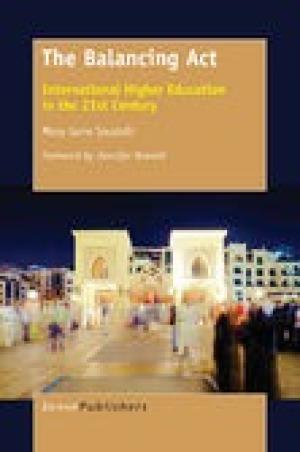
What can teachers of theology and religion learn from a text on contemporary global education? Moreover, “If our world is constantly changing, particularly with globalization, how can educators support the nature of change through curriculum, teaching, and learning, particularly in international contexts” (30)? Mary Gene Saudelli, a Canadian educator with a rich background of teaching abroad, highlights the significance of contextual considerations in twenty-first century teaching and learning through this case study of nineteen international educators at Dubai Women’s College in the United Arab Emirates. Within the pluralistic context of many of our classrooms, as well as the increased emphasis on internationalization in many of our institutions, theological and religious educators will benefit from Saudelli’s insightful analysis of contemporary educational theory and curriculum through a global lens. Divided into three modules, the first describes the context of the study along with a discussion of contemporary theories of adult learning, including sociology of education and change theories. Module 2 presents the international educators, the Emirati learners, and the curriculum. And Module 3 explores issues within the learning context: religion, culture, society, and language. Finally, a brief conclusion captures salient lessons learned from this case study with application to twenty-first century curriculum design. Saudelli’s analysis of contemporary learning theories in light of the global educational context is of particular significance as it represents the integrative thinking that is essential for our thinking and practice in culturally-responsive theological education. For example, she examines Knowles’ work on andragogy and Mezirow’s transformative learning theory from an international and intercultural perspective, indicating the implicit Western individualistic bias that undergirds these approaches to learning. Moreover, values such as empowerment or emancipation, lauded in contemporary adult education scholarship, may look quite different through the lens of a more restrictive Arab context. Saudelli’s description of twenty-first century learning and its implications for curriculum design is another helpful discussion. In her words, twenty-first century teaching and learning refers to “an orientation that recognizes the incredible change that has been ushered in by virtue of a dramatic technological evolution and advancements, globalization and cross-national migration of both people and information, and intense shifting of educational needs” (63). Such curriculum is interdisciplinary, experiential, balanced, and interconnected with both local and global contexts (63ff). Moreover, its design supports the development of key skills that students require to be equipped to address the opportunities and challenges in our ever-changing world. It may be instructive to consider how these criteria could contribute to shaping theological and religious studies within our own educational institutions. The section on faith is somewhat brief, especially given the enormous impact that religion has in the context of this study, the Arab world. And while the author does reference epistemological differences in the conclusion (179), a more robust discussion as to their significance for global education would be a welcome addition to her otherwise helpful synopsis in the final chapter. Thus, while the particulars of this case study may be unique, the author suggests that the text can be useful, “as a way to think about how we approach internationalization in education” (12). Moreover, its fresh perspective on curriculum and educational theory through a global lens is one that is worthy of consideration for contemporary theological educators.
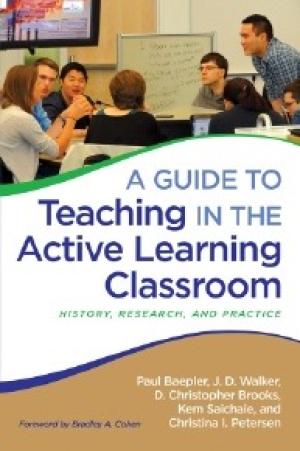
This book examines a particular type of classroom organization known as the “active learning classroom.” This type of classroom is not a lecture hall, but rather, is a room where there is no clear front or back, where students sit in movable chairs around round tables that facilitate group work shared with the larger group via screens. The very organization of the classroom forces the professor to have their back to at least some of the students all the time. This type of classroom interaction seems to be designed for larger class sizes, helping to transform a large lecture hall of students into a classroom where teacher and student interaction, as well as student-to-student interaction, is maximized. These types of classrooms have been shown to have a positive impact on students’ grades, which could be attributed to the room configuration inhibiting certain negative activities while encouraging positive ones. Active learning classrooms provide four main advantages: “immersion learning, the social dimension of learning, collaborative learning, and the performance aspect of teaching and learning” (16). Teaching in an active learning classroom is no longer just transmission of knowledge but a collaborative effort engaging the students for better and more long-term retention of knowledge. The subtitle of the book is “History, Research, and Practice.” The history of this method of teaching is covered in chapter one. The research that supports the practice is the focus of chapters two and three. Chapter two focuses more on the research aspects while chapter three focuses on the role that social interactions have in learning. The core of the book, chapters three through eight, gives practical suggestions on how to implement the teaching method, and presents common difficulties and how to overcome them. The last three chapters focus on how to help professors learn this method of teaching, a suggested methodology on how to study whether the change of teaching method had a positive impact on student learning, and what the future might hold for this teaching method. The book advocates a particular physical organization of the classroom. This is not up to the individual professors, but to the institutions in which they work. Even if one does not have the particular physical layout advocated in this book, there are a number of helpful tips for professors who seek to more actively engage their students. With chapters titled, “Assignments and Activities,” “Managing Student Groups,” and “Assessment and Feedback,” it is easy to find practical suggestions on how to make the classroom less didactic and more engaged. Each chapter has helpful and clear subheadings that make it easy to scan for the topic that one needs. Many of these methods are helpful in the religious studies classroom to help engage the student for a greater learning outcome. The examples in the book range from the sciences through to the humanities, helping a humanities professor get ideas on means of implementing the method in their own classroom.
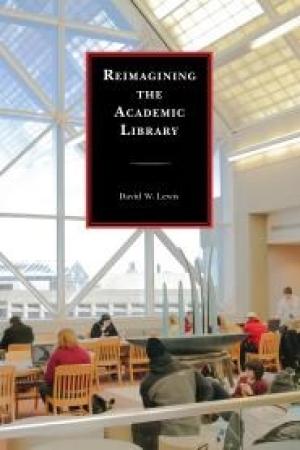
Technology and the digital age are rapidly changing the landscape of education. Theological institutions are not immune. Even though these changes can be difficult and painful, the fulfillment of our mission is enhanced and expanded when we embrace and lean into them. One big current issue is the future of our libraries – what the digital academic library looks like and what it will take to get there. Even though significant change is necessary, a discernable path forward does exist (viii). This includes a substantial change in the role of library staff and the roles libraries play in their institution. As digital technologies replace print as the primary means of access to nearly everything, libraries will “move from using technology to do old things in new ways to using technology to do new things” (vii, viii). This will require new technologies, strategies, values, and even a new culture (xv). It is encouraging that Lewis writes this as an academic librarian with forty plus years of experience. He is a digital immigrant who has learned to accept and navigate the changes. Instead of holding onto the comfortable past, he is excited about the future! This book reminds me of a well-written backcountry trail guide. It is divided into two sections. The first, “The Forces We Face,” describes the landscape, including the history and background; the second, “Steps Down the Road,” is the practical description of the trail ahead, including landmarks along the way. Whereas my backcountry guides discuss the flora, fauna, geology, people, and events significant to say Olympic National Park, Lewis takes us on a historical journey of academic libraries. The central theme is that libraries have always done three things: (a) kept documents for the long haul, (b) provided the knowledge and information that the communities and institutions that fund them need, and (c) assisted individuals in finding and using information (xi, 153). Libraries of the future will continue to do these same things, but how they do them will look different. The focus has been and will continue to be their role in research and preservation and distribution of scholarship. As with any trail guide, section two is the most important: the trail descriptions are found here. My backcountry guides list waypoints, elevation, mileage, landmarks, campsites, and other important information needed to successfully navigate the trail and arrive at the destination. Lewis in like manner describes important steps that need to be taken to arrive at his destination: an academic library, relevant and effective in the digital age. The trailhead is the library of the past, a place that builds local collections and staffs them with people who organize and know how to find the documents and facts in them (153). The destination at the end of the trail looks much different. Collections will be streamlined and library space will be utilized differently. Staff requirements and roles will not be the same. You will be uncomfortable with some of Lewis’ ideas, but you will be stretched and prompted to thought and healthy conversation. We are using the book for this purpose at Denver Seminary. I heartily recommend this book. The price may be high for a paperback, but this is a unique book that should be read by key members of every institution that wants to be proactive in moving ahead into the digital age. If nothing else, get ahold of a copy and read the Conclusion. This provides a quick summary of the major premises and practical steps.
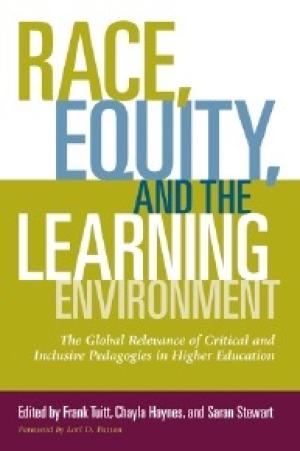
The recognition that students’ identities play a significant factor in learning has begun to impact university and college classrooms over the past few decades. In particular, there is recognition that racial identities of minority students and students of color shape their experience in the educational process. What has become increasingly apparent, and therefore in need of redress, is the lack of racial equity in pedagogical frameworks and practices. Race, Equity, and the Learning Environment: The Global Relevance of Critical and Inclusive Pedagogies in Higher Education brings these matters to the fore and argues that critical and inclusive pedagogies (CIPs) can, when employed effectively, offer a way forward. Such approaches are not new, but offer the promise of creating rich learning environments by “(a) prioritizing the intellectual and social development of students, (b) fostering classroom climates that challenge each student to achieve academically at high levels, (c) recognizing and cultivating the cultural and global differences that learners bring to the educational experience, and (d) engaging the ‘whole’ student (e.g., intellectually, spiritually, and emotionally) in the teaching and learning process” (2). The volume contains an introduction and conclusion, and in between are eleven essays reflectioning on CIPs at the intersection of race and higher education. The essays are divided into three sections covering theoretical dimensions (three essays), practical implications (four essays), and assessment (four essays). I have chosen to highlight one essay from each section that is particularly valuable for the religious studies classroom. In part one, “Pursuing Equity Through Diversity” (Bolitzer et al.) presents a series of valuable reflections on how student diversity can be used to encourage and achieve classroom equity. Using a multidisciplinary approach, the authors highlight three perspectives on diversity: as the intersection of identities and power, as fostering individual and collective growth, and within subject-matter learning. On this basis, they see diversity as a collective resource in the classroom that advances learning. In part two, Koshino’s article explores the racial climate and experience of a small midwestern college through interviews with students of color. The results enable her to hone in on some glaring deficiencies in the campus culture for minority students and suggest strategies for improvement in these areas. Finally, in part three Ghabra et al. critique the white, heterosexual, male norm of university classrooms through a framework informed by CIPs and intersectional sexuality. They highlight their use of performance writing to evaluate classroom interactions marked by an ethic of responsibility, love, and care. The result reveals how students and professors can work together to create inclusive spaces. Does the volume have value for the religious studies or theology classroom? Given the personal nature of religious exploration and study, the answer is a qualified “Yes!” I suspect teachers of religion will find the essays focused on theoretical issues of more value because of their broad application. However, the essays on practice and assessment also contain material that can be adapted to the religious studies classroom. At any rate, since race and religion intersect so dramatically (especially in the U.S.), CIPs offer a way for students to think critically not only about religion generally, but to do so in a manner that also affirms and values the perspectives of their fellow students. To the degree that these essays prompt deeper reflection on how teachers can engage students in these ways, they will prove a valuable addition to the religious studies toolbox of resources.
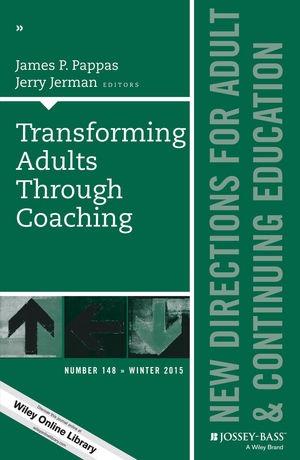
Transforming Adults Through Coaching (New Directions for Adult and Continuing Education, Number 148)
Coaching has grown exponentially as a professional practice and as a discipline in recent years. According to the International Coach Federation (ICF), the number of coaches worldwide increased from some 30,000 in 2008 to 47,000 in 2012. Coaches assist individuals with a variety of vocational and personal issues in both public and private sector organizations. As a result, many clients have become better prepared to reach their workplace and life goals. The field of adult coaching as a discipline has matured considerably alongside the practice itself. For example, studies of best coaching practices and analysis of coaching models abound. Professional organizations have formed and have begun to address such critical issues as training, certification, and ethical standards. Transforming Adults Through Coaching, edited by Pappas and Jerman, provides an introduction to the history, current practices, and possible future of coaching. Each chapter in this compact overview includes material that will benefit scholars, practitioners, and their clients. In particular, there is a solid review of adult development and learning theory with illustrative case studies and pertinent bibliographies. Pappas and Jerman acknowledge in their introduction that clarity is needed when considering what coaching is and is not. It is, they say, neither psychotherapy nor advice giving. Coaching is relational. It is ordinarily practiced with individuals and not groups. And, they underscore, the coaching relationship typically proceeds with a combination of questions and attentive listening. The results, they contend, can be transformative for clients. The first three chapters sketch the parameters for the field of adult coaching. The initial essay by Rachel Ciporen is “The Emerging Field of Executive and Organizational Coaching: An Overview.” Ciporen provides the reader with essential definitions and perspectives on coaching as well as a valuable list of resources for further study. She also notes some of the most common critiques of coaching, such as a frequent reliance on an “overly simplistic view of the learning and change process” (12). Carolyn Coughlin explores a major goal of adult coaching in “Development Coaching to Support the Transition to Self-Authorship.” Her essay describes how coaches, using their knowledge of adult development – especially body and mind theory and practice – can facilitate their client’s movement toward self-authorship. Adult learning theory provides a vital foundation for coaching. Elaine Cox’s contribution, “Coaching and Adult Learning: Theory and Practice,” identifies links between andragogy and transformative learning and how each connects with the practice of coaching. In addition, Cox addresses practical applications of these theories. Brief illustrative dialogues are included to show how the theories can impact actual adult coaching. “Coaching as a Strategy for Helping Adults” by Dorothy M. Wax and Judith Westheim focuses on the kind of issues adult learners bring to the learning environment and how coaching strategies can help them deal with professional and personal obstacles to success. Pappas and Jerman’s closing essay, “The Future of Coaching among Adult Populations,” outlines major directions and critical issues that lie ahead for the field. They underscore not only continued growth for coaching, but also the need for further refinements, including more specialization. These are some of the essays that make this brief collection valuable, not only for coaches and their clients, but for a range of helping professionals and researchers.
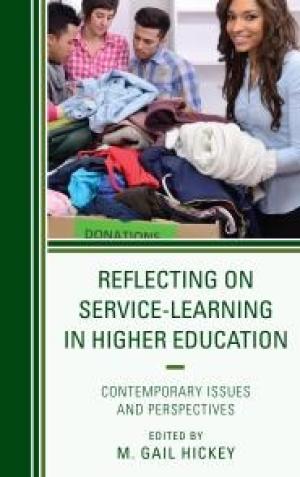
M. Gail Hickey has gathered together a valuable resource in Reflecting on Service-Learning in Higher Education. The chapters provide a vast collection of best practices and important principles to consider when engaging students in academic service-learning. The book is divided into three sections focusing on different perspectives for reflection: Community Partnerships, Classroom Practice, and Diversity. Although the first section is titled “Reflection on Community Partnerships,” it is really more a reflection on institutional commitment to building community partnerships. The section has two provocative chapters that take the reader through a reflection on just what impact an educational institution should have within its surrounding community and how service-learning can help the institution attend to the voices of the community in which it is placed. Sherrie Steiner’s principles for implementing reciprocity provide a great framework for institutions and faculty to consider while developing service-learning curriculums. Joe D. Nichols asks important questions about the focus on research and specialization at the expense of community and civic engagement and draws from multiple sources to foster reflection around alternatives to faculty recognition of such public work. “Reflecting on Classroom Practice” is the second and largest section of the book. Each chapter offers a perspective on how service-learning has worked in a particular context. This collection of cases from fields as varied as education, sociology, fine arts, and dental hygiene offers a myriad of suggestions for how to structure a curriculum that incorporates service-learning. There are suggested rubrics, logistical considerations, a solid bibliography with each chapter, and suggestions for what worked well and how one might improve the process over time. Readers will find this section full of ideas, suggestions, and methods focused on building a curriculum, partnering with community members, and methods for reflection with students. The final section, “Reflecting on Diversity,” pushes even further into the questions that come up when students engage in service-learning with diverse communities. Here the case studies offer insights into how students perceive and articulate the impact of their service-learning on their growing sense of their own contextual lenses and the lenses of those with whom they work. Faculty and administrators are invited to anticipate the types of responses their own students will have in an effort to foster positive reflection and growth in the students that is fruitful for the partner communities as well. One concern with the book is that community partners are not represented as writers of the chapters. The effort to shed light on the importance of effective community partnerships and the responsibility of higher education institutions to develop service-learning curriculum in partnership with the surrounding community is important. The inclusion of the voices of partner communities as authors could have added to the depth of the book. Reflecting on Service-Learning in Higher Education is a resource that will be appreciated by high school and university faculty and administrators. The questions raised and the suggestions shared will be useful for any institution looking to begin or strengthen their commitment to service-learning in higher education. Institutions, faculty, students, and the communities with which they partner will all benefit from M. Gail Hickey’s invitation to reflect.
2016-17 Teaching and Learning Colloquy for Mid-Career Religion Faculty at Colleges and Universities "Pedagogies of Community Engagement" APPLICATIONS CLOSED Experiential education includes a wide range of pedagogies that engage students in the use of material culture, site visits, active experimentation, creative performance, and service. This colloquy will focus on one type of experiential education, pedagogies of community engagement. These pedagogies are motivated by ethical intent, give attention to questions of embodiment and social location, foster empathetic imagination, and are characterized by collaborative partnerships. Why would mid-career faculty focus on pedagogies of community engagement? To align their passions and commitments with their teaching practice and scholarship To develop learning outcomes that demonstrate civic knowledge and engagement, intercultural competency, and ethical reasoning and action, all through active involvement with diverse communities and real-world challenges (identified as an essential learning outcome of the “Liberal Education, America’s Promise” initiative of the American Association of Colleges and Universities) To engage the work of disciplines, institutions, and communities that effectively address difficult social issues in an increasingly pluralistic and globalized world To consider whether existing models of pedagogies of community engagement are sufficient to transform learners and teachers, institutions, and communities over time This colloquy will explore how, why, and if Religious Studies and Theology offer unique questions, methodologies, and tools for collaborative learning through community engagement. Do comparativist and interdisciplinary approaches expand our capacities to critically understand and engage the multiplicity of experiences in diverse communities? Can the content of our field offer constructive sources for thinking about ethical intent including embodiment, empathy, and action in partnership with local communities? Does this thinking challenge us to reconsider how we engage diverse opinions and values inherent in pluralistic democracies? We invite applications from mid-career teachers with a range of experience with these pedagogies: from those who are new to these pedagogies and are ready to seriously explore their use to those who want to deepen their own experience and/or guide conversations about these pedagogies with departments, institutions, or community partners. Goals To create a collaborative learning community in which participants will share and learn from each other’s expertise and experience To explore emerging models and trends of community-engaged pedagogies To develop teaching practices that: • complexify students’ thinking about civic and community-based issues; • interrogate social locations of students and teachers; • invite students to cultivate empathic perspectives by creatively/imaginatively inhabiting worlds beyond their own; To reflect on one’s personal and professional priorities at mid-career by: • considering the alignment between teachers’ passions and commitments and their teaching practice; • increasing participants’ capacity to be effective agents for change; • developing projects that will translate and disseminate the insights of the colloquy into other contexts • integrate class content with community-based action in partnership with local communities Honorarium Participants will receive an honorarium of $3,400 for full participation in the three workshop sessions, plus local expenses and travel. Each participant is eligible to apply for a $1,000 grant for a colloquy-linked project. Read More about Payment of Participants Read More about the Colloquy GrantProgram Participants Front Row: *Tom Pearson (Wabash Center), * Joseph Favazza (Stonehill College), *Joy Bostic (Case Western Reserve University), *Bobbi Patterson (Emory University), Andrew Irvine (Maryville College). Second Row: Lori Hale (Augsburg College), Robert Williamson (Hendrix College), Teresa Delgado (Iona College), Joyce Nki (Bethune-Cookman College), Julie Miller (University of the Incarnate Word), Ahida Calderon Pilarski (Saint Anselm College), Christopher Tirres (DePaul University). Third Row: Maureen O’Connell (LaSalle University), Todd Hibbard (University of Detroit Mercy), Davina Lopez (Eckerd College), Sara Pattterson (Hanover College), William McDonald (Tennessee Wesleyan College), David Aftandilian (Texas Christian University), Sarah King (Grand Valley State University). leadership/staff Workshop Information Dates First Session: June 27 to July 2, 2016, Wabash College Second Session: January 26-29, 2017, Corpus Christi, Texas Third Session: June 5-10, 2017, Wabash College Leadership Team Joseph Favazza, Stonehill College, Director Joy R. Bostic, Case Western Reserve University Bobbi Patterson, Emory University Thomas Pearson, Wabash Center Important Information Travel and Accommodations for Summer Sessions at the Wabash Center Policy on Full Participation Map of Wabash College Campus Payment of Participants Colloquy Grant Program (2016-17) List of Awarded Grants For More Information, Please Contact: Lynne Westfield, Director Wabash Center 301 West Wabash Ave. Crawfordsville, IN 47933 765-361-6047 westfiel@wabash.edu

Have you noticed? The lexicon of the American mainstream media has shifted. Before the campaign season, the news only sparingly discussed notions of race. Any allusion to race was vague and superficial. Reporting of race was primarily reserved for assuring the public that criminals are either African American or Latino/a. Whiteness was rarely mentioned. White supremacy, which saturates US society, was mentioned even less. Any media analysis about the identity politics of race, class, gender, or religion was typically reserved for the interviewee to initiate or was the purview of “liberal” media. Occasionally, “the Black view” (as if there is the “normal viewpoint,” and the sole counterpoint is “the Black view”) would be brought into the conversation in the month of February or when discussing issues of “the inner city.” Overt acts of anti-Semitism or blindingly vivid acts of racial hatred had to be the headline story in order for a reporter to mumble an analysis which suggested hegemonic forces might be operative in US society. Most mainstream reporting treated each act of violence as if it were an isolated event. Hardly ever was there analysis and dialogue that suggested oppression is systemic, historic, and ongoing in our beloved democracy. Then it happened... The presidential campaign brought such bold, constant, and unrelenting hate-speech, outrageous acts of demeaning other-ed human beings, and outright, unfettered arrogance that the media was forced to change the run-of-the-mill lexicon by adding words usually heard in my graduate classroom setting. Reporting accurately so confounded the media that a different vocabulary had to be deployed. Words used sparingly, or if at all, are now common-speak in the public arenas: xenophobia, patriarchy, misogyny, bias, islamophobia, homophobia, prejudice, racism, sexism, classism and alt-right swirl through the everyday news reporting. My ear is refreshed to hear my preferred analytical vocabulary finally in the public and being nationally engaged. My heart is sick knowing that if these words are so commonplace and routine in the democratic dialogue of a pluralistic society, then we are near a brink of unprecedented social upheaval. I am, in an ironic way, appreciative that the national discourse was so overwhelmed with the need to describe the in-your-face hatred that it reached for important words. Pressing this new lexicon into extended service is paramount to our national dialogue on freedom and government. Until now, twenty-first century forms of racism, sexism, classism and heterosexism had morphed into expressions that were palatable to those whose highest values are niceness, pleasantry, and conformity. I am hoping this new lexicon is sparking a needed curiosity and that the new lexicon will assist persons to label their oppressive experiences for which they previously could not name but under which they suffer. Succinct naming of our fears and anxieties as well as interrogation of the structured hatred that perpetuates the “isms” is a powerful shift – we who teach, minister, and lead must sustain it. OMG! Then something else happened… Recently, the TV was on while I was busying doing something else other than watching it. My focus was jolted to the media broadcast when I heard a surrogate of the President Elect say to an interviewer, “The word racist no longer means anything. It simply means an angry, old [white] man.” The new lexicon had been noticed. Those who use post-truth hegemonic strategies are making efforts to redefine, distort, and garble these terms. This deceptive definition of racist has extracted race, power, domination and victimhood. The new definition infers white women do not have the power to be racist (Ugh!). Racism is now, literally, being defined as toothless, impotent, and ignorable. We are living in tumultuous times when words of hatred, corruption, exploitation and dehumanization can be redefined by those who reap the benefits of white supremacy and patriarchy. We must recognize the power of words and keep these tools in our own quiver – in public ways. The vocabulary that usually only inhabits my classroom spaces is now in the living rooms of average American citizens. We must not squander this moment. Those who are painfully acquainted with this vocabulary must take the time to assist those who are newly acquainted to these ideas and concepts. I suspect many people are hearing these words for the very first time. We must pause to discuss, define, and nurture this new public discourse clamoring to make sense and make meaning of all that is happening in the identity politics of our democracy. Listen for the new words in the media. Make a list, and then talk with your family, friends, teachers, students, parishioners, employees, etc. about their definitions and their importance as tools of liberation at this moment. Listen to the use of the words. Are they being sanitized? Are they being coopted to new meanings that give the impression that oppression is not vicious or evil? We who feel the gravity of current national politics cannot squander these teachable moments. Finally, to those of us who have the privilege and responsibility of regular interaction with students in classroom settings, let us integrate this lexicon into our classroom dialogues. Please do not hide behind the excuse that your academic discipline or course topic does not lend itself to a conversation which includes identity politics and injustice. Please do not rely upon the faculty of color to carry the burden of this conversation for the curriculum. Please do not depend upon the students of color to ask you a question after class. Being serious about this teachable moment will take your initiative, and perhaps, even a new approach to your own teaching and scholarship. In this moment of the new public lexicon, let our teaching struggle to stay abreast of the shifting political landscape and let us work-at a new sense of relevance and urgency for the formation of our students. Especially in our classrooms where our judgment is trusted, we must disentangle, expose, and de-fang the burgeoning pseudo-methodology which would intentionally distort and misrepresent the meanings of critical terms lest this dishonesty become preferable to our students. Our freedom deserves these conversations.